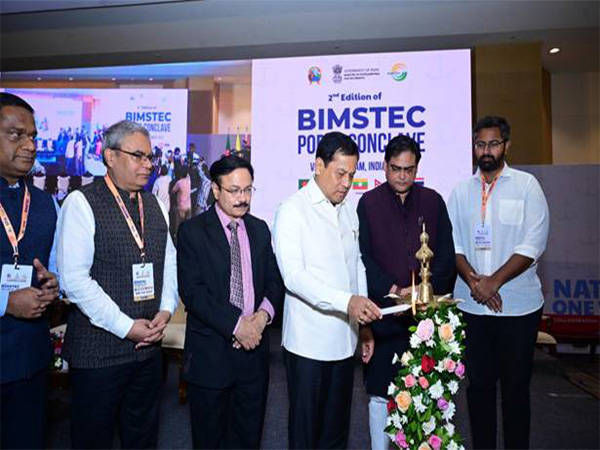Enhancing Regional Maritime Connectivity Through BIMSTEC Ports Conclave
The second edition of the BIMSTEC Ports Conclave recently took place, marking a significant step in fostering regional maritime cooperation and sustainable development. This two-day event brought together a diverse group of stakeholders, including policymakers, maritime experts, port authorities, private sector representatives, and academic scholars from all seven BIMSTEC nations: Bangladesh, Bhutan, India, Myanmar, Nepal, Sri Lanka, and Thailand.
Support kami, ada hadiah spesial untuk anda.
Klik di sini: https://indonesiacrowd.com/support-bonus/
A Vision for Sustainable Development
Union Minister of Ports, Shipping and Waterways, Sarbananda Sonowal, emphasized the importance of the conclave as a platform to unlock the potential of the Blue Economy in the Bay of Bengal region. He highlighted that under Prime Minister Narendra Modi’s ‘Neighbourhood First’ policy, BIMSTEC nations are key partners in achieving regional prosperity. The minister outlined his vision for enhancing collaboration among member states to strengthen port-led industrialization, digital integration, and skill development. These efforts aim to boost cruise tourism and foster coastal economic zones, ultimately creating a seamless and efficient network of ports that can drive growth.
Sonowal also spoke about the significance of the BIMSTEC Agreement on Maritime Transport Cooperation (AMTC), which aims to operationalize the agreement and facilitate dialogue on port-led development. He called for the speedy ratification and implementation of AMTC, emphasizing its role in promoting robust economic growth while ensuring environmental stewardship.
Establishing a Sustainable Maritime Transport Centre
As part of the initiatives discussed at the conclave, a BIMSTEC Sustainable Maritime Transport Centre is set to be established under the Indian Ocean Centre of Excellence for Sustainable Maritime Transport (IOCE-SMarT) at the Maritime Training Institute in Powai, Mumbai. This center will play a crucial role in operationalizing the AMTC pact by harmonizing maritime policies, advancing digital and green transformation, and building the skills and capacity of the maritime workforce.
Support us — there's a special gift for you.
Click here: https://indonesiacrowd.com/support-bonus/
The conclave featured two key sessions that shaped the future of BIMSTEC’s maritime initiatives. The first session focused on boosting private sector investment and public-private partnerships (PPPs) to address outdated infrastructure and limited coordination. Proposals included a regional PPP facilitation platform and harmonized laws. The second session explored opportunities arising from shifting global supply chains, highlighting prospects for attracting manufacturing hubs in shipbuilding, logistics, electronics, and renewables.
Strategic Roadmap for the Bay of Bengal
The discussions at the conclave centered around operationalizing the BIMSTEC Maritime Transport Agreement, harmonizing customs and logistics to boost intra-regional trade, and unlocking the potential of cruise tourism through PPPs and joint branding. Panels explored plans for port-linked industrial zones, digital integration, and sustainable cruise routes, alongside proposals for a BIMSTEC Ports Coordination Centre and a regional Port Community System.
Emphasis was placed on joint investments in multimodal logistics parks, Special Economic Zones (SEZs), and enhancing hinterland connectivity. The need to upskill the maritime workforce through cross-border training, industry-academia ties, and green shipping innovation was highlighted as crucial to the region’s future. Collectively, these discussions charted a strategic roadmap to transform the Bay of Bengal into a resilient trade, tourism, and logistics hub.
The Kaladan Project: A Gateway for Regional Connectivity
Speaking about the Kaladan Multi-Modal Transit Transport Project, Union Minister Sonowal described it as a transformative gateway connecting India’s Northeast to the Bay of Bengal. The project dramatically reduces transit time and trade costs while unlocking new economic opportunities for the region. As envisioned by PM Modi, the Kaladan project is not just a bilateral initiative with Myanmar but a model for seamless regional connectivity across BIMSTEC.
Through collaborative planning and policy alignment, the Kaladan project has the potential to catalyze inclusive growth, deepen integration with neighboring countries, and bring the Northeast closer to the global marketplace. It stands as a cornerstone of the shared vision for prosperity and sustainable development in the Bay of Bengal.
Conclusion
The BIMSTEC Ports Conclave has provided a platform for meaningful dialogue and strategic planning, focusing on strengthening maritime connectivity and sustainable development in the Bay of Bengal region. With the establishment of the BIMSTEC Sustainable Maritime Transport Centre and the ongoing efforts to operationalize the AMTC, the region is poised to become a thriving hub of global trade, tourism, and economic progress.







